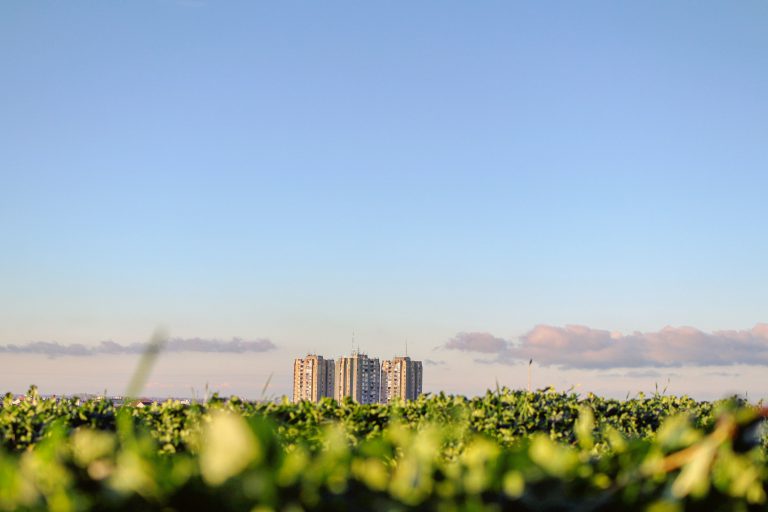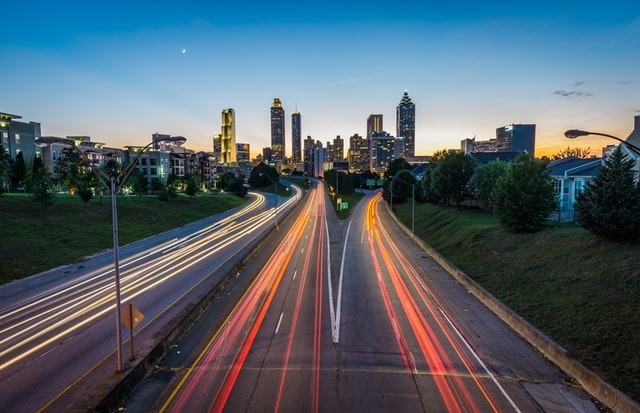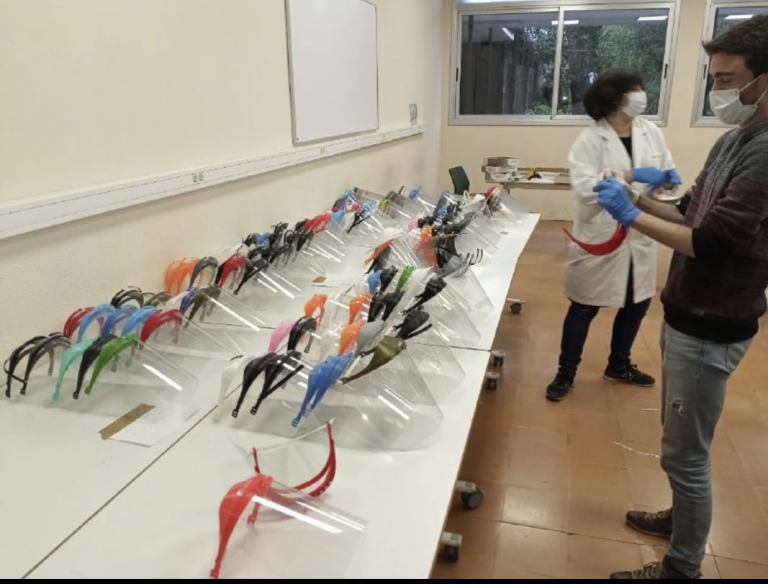Agile algorithms for city logistics: towards smarter and more sustainable cities
4 September, 2019 Sustainable cities
Sustainable citiesIn the face of sharp urbanization around Europe and worldwide, many governments realize that city transport and mobility activities play a major role in the development of smart and sustainable cities. The emergence of the on-demand economy (services) and the e-commerce (products) have boosted the number of transport and mobility operations in urban and metropolitan areas.
New types of zero-emission vehicles are starting to populate our cities, e.g.: electric vehicles, unmanned aerial vehicles, autonomous vehicles, etc. Likewise, new transport modes, such as carsharing and ridesharing, are becoming increasingly popular. However, all these technological advances and innovative transport modes also arise complex operational challenges that need to be solved, e.g.: how many charging stations are required and where should they be located?, how many parkings are needed for the fleet of shared vehicles?, which is the optimal travel plan based on the current status of the traffic?, how should we re-optimize a travel plan whenever new data on traffic conditions becomes available?
Using open science initiatives, the ICSO group at IN3 cooperates with international partners in developing efficient solutions to these problems by designing a new family of ‘agile-optimization’ algorithms able to quickly process big data to support real-time decision making, thus saving citizens’ time, reducing energy consumption, and increasing citizens’ safety and social well-being.
Can intelligent algorithms improve city logistics?
Transport and mobility (T&M) activities represent a key sector in modern cities, and they significantly contribute to the social and economic progress worldwide. The emergence of the on-demand economy (services) and the e-commerce (products) have boosted the number of pickups and deliveries in urban and metropolitan areas. Thus, the need arises to increase the effectiveness and sustainability of T&M operations and policies in these areas (Savelsbergh & Van Woensel 2016). In the face of sharp urbanization, many local and regional governments realize that open science (open data and algorithms) plays a major role in the development of the so-called smart sustainable cities. Large quantities of data are gathered in real time via electronic devices located inside vehicles and infrastructures (computer chips, sensors, traffic cameras, drones, etc.), transmitted over the Internet, and analyzed through intelligent algorithms that allow for predicting the evolution of traffic and making informed decisions, thus saving energy consumption and citizens’ time, among other social, environmental, and economic benefits. Modern T&M systems include heterogeneous fleets consisting of traditional internal-combustion engine vehicles as well as other types of vehicles using ‘greener’ (less polluting) technologies, e.g.: bicycles, electric vehicles, plug-in hybrid vehicles, and even unmanned or self-driving vehicles. The increasing incorporation of these low-emission vehicles in T&M activities also raises some additional challenges from the strategic, planning, operational, and environmental perspectives (Juan et al. 2016). For instance, cities are required to provide charge stations for electric vehicles. Thus, investment decisions need to be made about the number, location, and capacity of these stations. Similarly, the limited driving range and load capacity of most electric vehicles impose additional constraints when designing efficient distribution and collection routes (Juan et al. 2014, Eskandarpour et al. 2019). Since T&M operations are still responsible for large contributions of carbon emissions within the European economic area, huge reductions in pollutant emissions would be reached if the participants of the T&M network embrace the benefits of carefully designed cooperation strategies and mobility concepts such as carsharing and ride-sharing systems, and the coordinated use of real-time and open data. Our ICSO group at IN3 aims at exploiting open data initiatives to develop optimized T&M concepts and solutions that contribute to make cities smarter and more sustainable (Quintero-Araujo et al. 2019). Hence, our research activity contributes to increase the efficiency and sustainability of T&M operations in modern cities by analyzing available open data on transportation and designing a new class of extremely fast, effective, open, and easily parallelizable optimization algorithms. These algorithms will allow for a coordinated and effective use of electric, unmanned, and self-driving (autonomous) vehicles in modern cities. The acquired knowledge (e.g., algorithms and best practices) are also made public, so it can be used by other researchers and organizations worldwide.
What is agile optimization?
The new ‘agile optimization’ (AO) approach refers to the massive parallelization of biased-randomized heuristics (Grasas et al. 2017), which are extremely fast in execution (thus allowing for real-time decision making), perfectly parallelizable (follow easy-to-implement randomized heuristics that can be executed on parallel threads), flexible (can be adapted to cope with different variants of the problem, including those under dynamic or uncertain conditions), parameter-less (do not require intensive parameter fine-tuning processes), on-line (can be used iteratively as new streams of data arrive), and still effective (able to provide high-quality solutions to complex decision-making problems). The AO approach represents a new perspective to that of traditional optimization, which typically assume a fixed duration time horizon in which conditions are non-dynamic. In contrast, AO embraces the large scale and dynamism of the real world (Arnau et al. 2018), with its constantly evolving environmental conditions (e.g., traffic, vehicles location, unexpected demands, disruptions, etc.). Offering real-time solutions in these dynamic and large-scale scenarios requires the new AO paradigm, especially when unmanned and self-driving electric vehicles are considered under uncertainty scenarios (Juan et al. 2018).
Why are agile algorithms relevant?
Being able to optimize and re-optimize every few seconds as new streams of data are provided, these new AO algorithms can support environmentally aware decision making and lead the way towards zero-emission T&M activities in modern cities. This, in turn, will contribute to generate environmental, economic, and social impacts via the emergence of new business models and the potential improvements in quality of life of citizens. These actions align our research with the European strategies (European strategy for low-emission mobility), policies (urban environment policy), and programs (clean air program).
Mission and specific goals
Based on the aforementioned bearings, our mission is to generate, using open data, novel T&M concepts and solutions based on the AO paradigm. These solutions are able to process, in real time, new streams of data to efficiently coordinate shared-connected and low emission T&M services in the on-demand economy, thus allowing for real-time decision making. Some specific objectives of our research are: (i) to identify typical fields of application and analyze the key challenges related to freight T&M activities in modern cities, with special focus in shared-connected and low-emission operations; (ii) to develop and evaluate theoretical models considering both static infrastructures (consolidation centers, parking areas, stations, and charging points), as well as dynamic traffic conditions and mobile agents (heterogeneous freight fleets combining combustion and electric vehicles for private or shared transportation); (iii) to design, implement, and measure the potential impact of the novel AO paradigm, which processes streams of data in real time and generates high-quality solutions in milliseconds; (iv) to address and study the feasibility of an extendable model for the integration of related T&M elements and activities of low-emission and shared-connected vehicles; and (v) to evaluate the impact of using AO algorithms from a multi-stakeholder perspective and transfer the acquired knowledge, so that best practices for sustainable T&M plans can be generalized to many cities in Europe and worldwide.
How are we improving the existing state of the art?
Our research extends the existing work by including the novel concept of ‘agile optimization’, which becomes necessary whenever connected, self-driving, and unmanned vehicles are considered in T&M operations, specially when involving carsharing and ride-sharing transport modes. Consequently, the research developed by ICSO@IN3 provides beyond state-of-the-art progress in the application of real-time optimization, high-frequency reoptimization in urban and metropolitan T&M activities, and the use of novel AO methods for sustainable multi-echelon and multi-mode T&M operations in modern cities worldwide.
What social benefits can be derived from our research?
The results of our research are enhancing our understanding of cost effective strategies, measures, and tools to achieve essentially zero emission logistics and mobility in modern cities around Europe and beyond. Urban and metropolitan areas have become very large and polluting since the massive presence of internal-combustion engines. In addition to public or private transportation, the increase of freight transportation activities and logistics operations in these areas represents 30% of the world’s energy consumption and a large amount of carbon emissions. Therefore, our research aims at analyzing and quantifying the potential impact of new T&M concepts that allow for optimizing and fostering shared-connected and low emission operations.
Our research provides optimization tools that allow for more sustainable and integrated T&M systems, thus reducing the environmental impact associated with these operations (Faulin et al. 2018). The research outcomes might allow policy makers and enterprises to support complementary actions for a better air quality due to the reduction of carbon emissions and atmospheric pollutants. According to the results in a recent study, urban low-emissions policies that promote the improvement of air quality parameters would prevent 1.3 million premature deaths until 2030. Moreover, the economic cost associated with mortality from air pollution is large, so low-emissions will directly help to mitigate this impact.
The benefits of healthier physical activity, such as walking, running, or cycling in cities with a low-emissions policy are significant. On the contrary, the adverse effects associated with the inhaled air pollution need to be avoided. Likewise, the impact of the reduction of noise levels caused by a large fleet of combustion vehicles cannot be underestimated. This issue impacts on the increase of cardiovascular diseases, sleep disturbance, and other diseases affecting mental health. Electric vehicles are quieter and their introduction in new transport concepts might considerably reduce the current levels of noise in crowded areas.
What about its economic impact?
Regarding the economic impact of this research, cost effective strategies for improving the transport system can be created. The developed strategies allow to complete the same mobility, distribution, and collection operations using less resources. They also reduce the time requested to make smart decisions. Hence, these new strategies directly impact in the cost reduction of T&M operations, a point that has an indirect impact on the final cost for the citizens of many products and services. Moreover, our research promotes that all citizens and carriers have access to cost-effective T&M options without compromising safety and security. Thus, these new strategies promote a reduction of different direct and indirect costs. In addition, our algorithmic solutions facilitate new carsharing and ride-sharing business models that contribute to more sustainable T&M practices. Hence, citizens benefit from a considerable time reduction in their mobility as well as in the picking-up and delivering of products and services. The optimization of T&M operations might also have an impact on the modification of consumption habits, favoring the availability of local and fresh food that requires an ultra-fast transport and more efficient supply chains (Estrada et al. 2019).
How do we promote open science, sustainability, and interdisciplinarity?
The research we develop provide open-access knowledge of the data and algorithms developed for real-time optimization and frequent re-optimization of T&M operations in modern cities, while considering policies, market, social, and environmental aspects (Reyes-Rubiano et al. 2018). In order to provide effective and efficient solutions to such complex problems, the researchers at ICSO need to cooperate with experts from different disciplines, including: operations research, data analytics, transport and logistics, smart cities, computer science, environmental sustainability, economics, etc.
References
Arnau, Q., Juan, A. A., & Serra, I. (2018). On the Use of Learnheuristics in Vehicle Routing Optimization Problems with Dynamic Inputs. Algorithms, 11(12), 208.
Eskandarpour, M., Ouelhadj, D., Hatami, S., Juan, A. A., & Khosravi, B. (2019). Enhanced Multi-Directional Local Search for the Bi-Objective Heterogeneous Vehicle Routing Problem with Multiple Driving Ranges. European Journal of Operational Research.
Estrada, A., Fikar, C., Juan, A. A., Hirsch, P. (2019). A Biased-Randomized Algorithm for Redistribution of Perishable Food Inventories in Supermarket Chains. International Transactions in Operational Research. DOI: 10.1111/itor.12668.
Faulin, J., Grasman, S., Juan, A., & Hirsch, P. (Eds.). (2018). Sustainable Transportation and Smart Logistics: Decision-Making Models and Solutions. Elsevier.
Grasas, A., Juan, A. A., Faulin, J., de Armas, J., & Ramalhinho, H. (2017). Biased randomization of heuristics using skewed probability distributions: a survey and some applications. Computers & Industrial Engineering, 110, 216-228.
Juan, A. A., Goentzel, J., & Bektaş, T. (2014). Routing fleets with multiple driving ranges: Is it possible to use greener fleet configurations?. Applied Soft Computing, 21, 84-94.
Juan, A. A., Mendez, C., Faulin, J., de Armas, J., & Grasman, S. (2016). Electric vehicles in logistics and transportation: A survey on emerging environmental, strategic, and operational challenges. Energies, 9(2), 86.
Juan, A. A., Kelton, W. D., Currie, C. S., & Faulin, J. (2018). Simheuristics applications: dealing with uncertainty in logistics, transportation, and other supply chain areas. In Proceedings of the 2018 Winter Simulation Conference (pp. 3048-3059). IEEE Press.
Quintero‐Araujo, C. L., Gruler, A., Juan, A. A., & Faulin, J. (2019). Using horizontal cooperation concepts in integrated routing and facility‐location decisions. International Transactions in Operational Research, 26(2), 551-576.
Reyes-Rubiano, L., Calvet, L., Juan, A. A., Faulin, J., & Bové, L. (2018). A biased-randomized variable neighborhood search for sustainable multi-depot vehicle routing problems. Journal of Heuristics, 1-22. DOI: 10.1007/s10732-018-9366-0.
Savelsbergh, M., & Van Woensel, T. (2016). 50th anniversary invited article—city logistics: Challenges and opportunities. Transportation Science, 50(2), 579-590.





